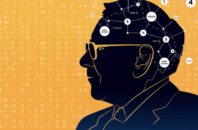The history of money: how the world’s first money appeared. What payment methods are popular today
The path to modern forms of money lies through many centuries, and the history of the appearance of the first money begins from the primitive era. We will talk more about when and where the first money appeared, as well as about the stages of the formation of the usual forms of payment later.
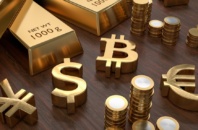
A brief digression
In prehistoric society, the need for a universal means of payment was completely absent. If something was missing in one tribe, it could easily be exchanged for what the other needed. Such barter relations suited the members of society until there was a need to systematize calculations, because the number of tribes was growing, and with it the need for a variety of goods. Writing and counting at that time had not yet received the necessary development, so society needed a product for which it was possible to purchase any other and with which it would be possible to keep records of debts.
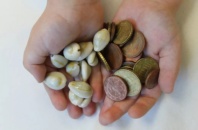
Stones or shells could act as primitive money. The latter, by the way, are still used within some small communities. With the development of commodity-money relations, money has also developed over a long period of history. As a result, the first bizarre forms were replaced by more modern ones.
Stages of the emergence and development of money
Период появления и становления денег начинается до Рождества Христова. Его начало приходится примерно на VII-V вв. до н. э., когда образовалась Милетская денежная система. Именно лидийцы считаются первыми, кто начал выпускать денежную единицу единой формы и веса. Далее эстафету подхватила Древняя Греция с ее знаменитой монетной системой. Впрочем, древние деньги ближе к современным, а началось все с более простого.
The first means of payment
Primitive society could not yet afford to produce money from metal, so it used what was easier to get in the required quantity, for example, stones and shells, pearls, cocoa beans, skins of wild animals, cattle, salt, honey, spices, tobacco, jewelry, fabrics and more.
Metal Coins
In the usual form, metal coins did not appear immediately. Initially, their role was performed by pieces of metals, but since they all had different shapes and weights, humanity had to come up with something new: metals began to be used for minting coins. This is how the Milesian and Phocian monetary systems mentioned above appeared, based on the coinage of gold. In parallel, the silver-based Euboean and Aegimian systems developed. Coinage of an alloy of gold and silver was also used.
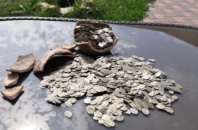
Later, money began to be minted from bronze, copper, aluminum and nickel alloy. The method of coin production was also changing. The coinage was replaced by casting, then by manual stamping, which was replaced by machine coinage. The issuer of metal money was an independent state, and their forgery, as now, was considered a crime.
Paper money
The first paper money appeared in China. In 910, the owners of coins who deposited their wealth began to issue paper certificates instead of the transferred coins. The bearer of such a certificate, if necessary, was given the number of coins he needed. Later, the Chinese realized that with the help of such records, calculations can be made.
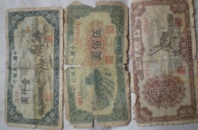
However, paper money as an alternative to metal began to be printed only in the XVII-XVIII centuries. And for example, in Russia, the first paper money appeared closer to 1769.
Electronic money
This is a special modern form of money, the appearance of which is due to mass computerization. The varieties of electronic money now include:
- Electronic fiat money stored on plastic cards (both debit and credit), the use of which is carried out using payment systems (MIR, VISA, PayPal, etc.). Thanks to the latter, the owner of the funds can make a transfer, pay for goods or services. If necessary, the cardholder can always cash out the funds and receive fiat money (in the form of paper bills).

- Electronic non-fiat money (digital equivalent), which are stored on electronic wallets (Yumopeu, Qiwi, WebMoney) and with which the owner of the funds can make payments. Cryptocurrencies, for example, Bitcoin, belong to the same variety.
- Virtual money used exclusively within a group of people united by common interests, for example, within a gaming community.
The emergence of banks
With the development of monetary systems and the appearance of paper money in circulation, the need for the creation of a centralized body, whose tasks were to include the issue and control of the circulation of funds, grew. The bank has become such a body. The first bank appeared in Sweden back in 1661. Other European countries were in no hurry to do this, so the next bank opened in France only a hundred years later, and in Russia even later, only in 1860.
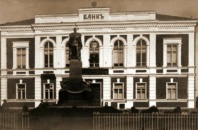
It is noteworthy that the first banks mainly operated in large cities and were often commercial. For example, in England, the role of the Central Bank was performed by a bank founded by private individuals (merchants). The first Central Bank, fully controlled by the state, was established in Switzerland in 1668.
The apogee of the development of the banking system can be considered the emergence after the Second World War of the World Bank, whose main task at that time was to provide financial assistance to countries affected by the war in order to restore their economies.
The first credit money
The XX and XXI centuries can rightly be called the era of credit money – a form that was promoted by the development of commodity production based on the implementation of purchase and sale by installments, that is, on credit.
The first types of credit money appeared a long time ago. The oldest is the promissory note, which was actively used in Europe back in the XVII—XVIII centuries. A check is almost the same age as a bill.
Now these forms of credit money are used, but banknotes are still more popular. The latter are actively being replaced by plastic cards, on which holders keep the funds lent to them. The first plastic card, a prototype of a modern credit card, appeared in the fifties of the last century.
Money today
The recent history of the development of money is due to their division into cash and non-cash. The former are more familiar to the older generation, they are tangible and reliable, but young people are more attracted to non-cash money circulation using plastic or digital cards.
And it’s not just about preferences. In the modern world, there is clearly a tendency to displace cash and replace it with new monetary units, in particular cryptocurrencies. Some experts even suggest that over time a single monetary unit will appear, which will replace not only national, but also world currencies.
Published: 20 July, 2022






